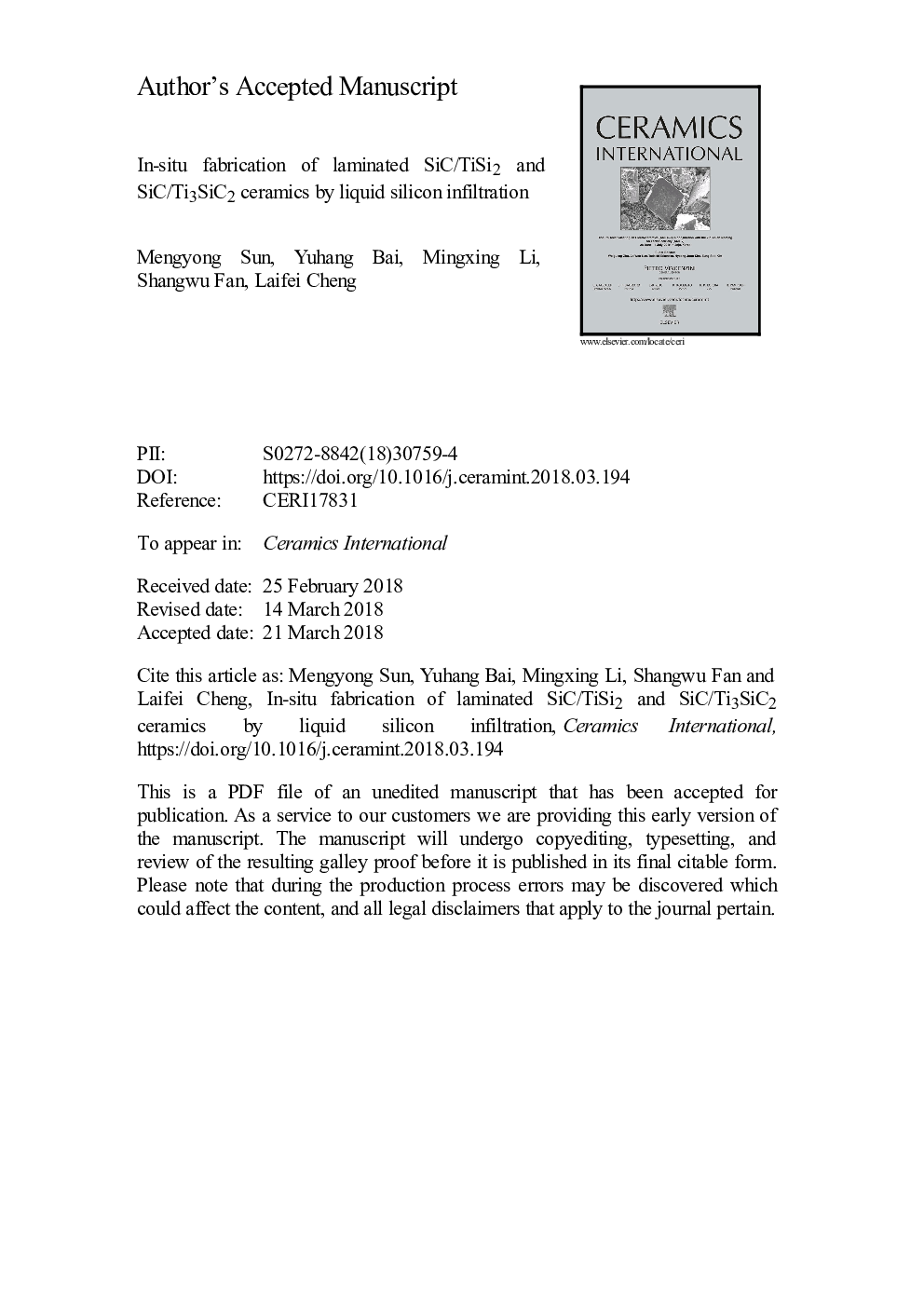| Article ID | Journal | Published Year | Pages | File Type |
|---|---|---|---|---|
| 7887028 | Ceramics International | 2018 | 20 Pages |
Abstract
The laminated silicon carbide/titanium silicon (SiC/TiSi2) and silicon carbide/titanium silicon carbide (SiC/Ti3SiC2) ceramics were successfully designed and fabricated by liquid silicon (Si) infiltration. When the thickness of TiC layer was 150 and 450â¯Âµm, the TiSi2 and Ti3SiC2 phases were the main products in the TiC layer, respectively. The as-fabricated structural unit of laminated SiC/Ti3SiC2 ceramics consisted of five layers of functionally graded materials, which has multiscale layered structure containing macro-layered structure and nano layered structure. The generation of hierarchical structure was attributed to the diffusion of Ti elements and in-situ formation of TiSi2 and Ti3SiC2. The growth direction of Ti3SiC2 was anisotropic, thus providing more paths for the crack propagation via deflection, branching, and delamination during fracture process. However, the crack propagation inside the Ti3SiC2 phase included the pull out, bridging, lamination, deflection, and fracture of the single layer, which are the energy absorption and damage tolerance mechanisms of the Ti3SiC2 phase.
Related Topics
Physical Sciences and Engineering
Materials Science
Ceramics and Composites
Authors
Mengyong Sun, Yuhang Bai, Mingxing Li, Shangwu Fan, Laifei Cheng,
